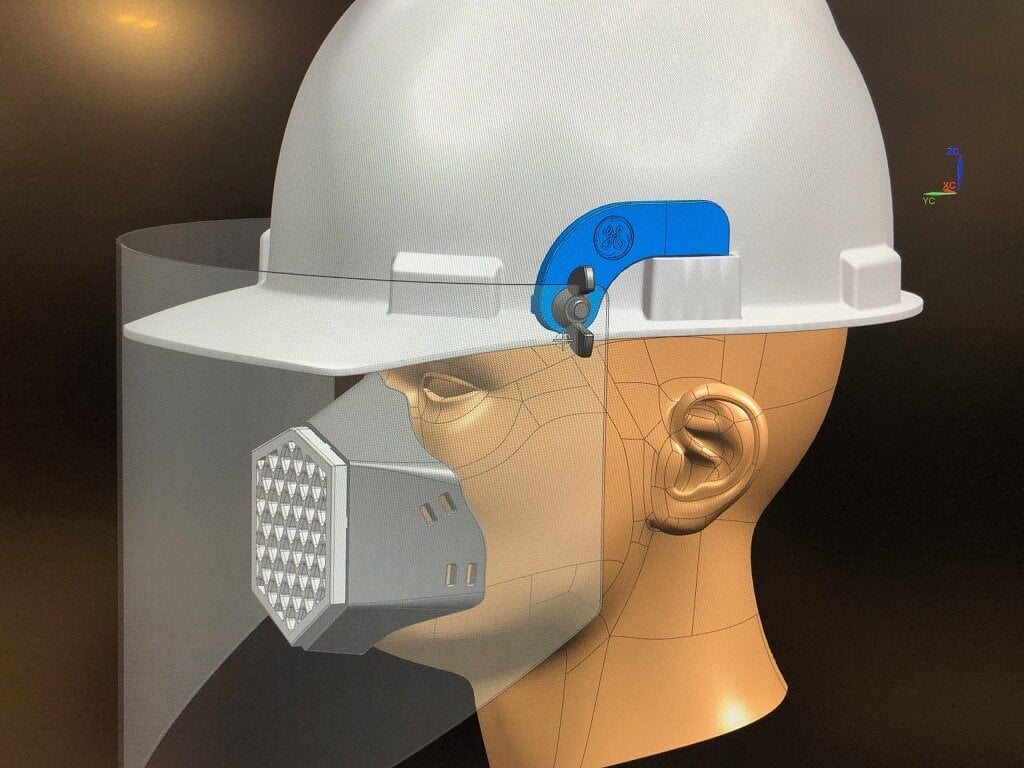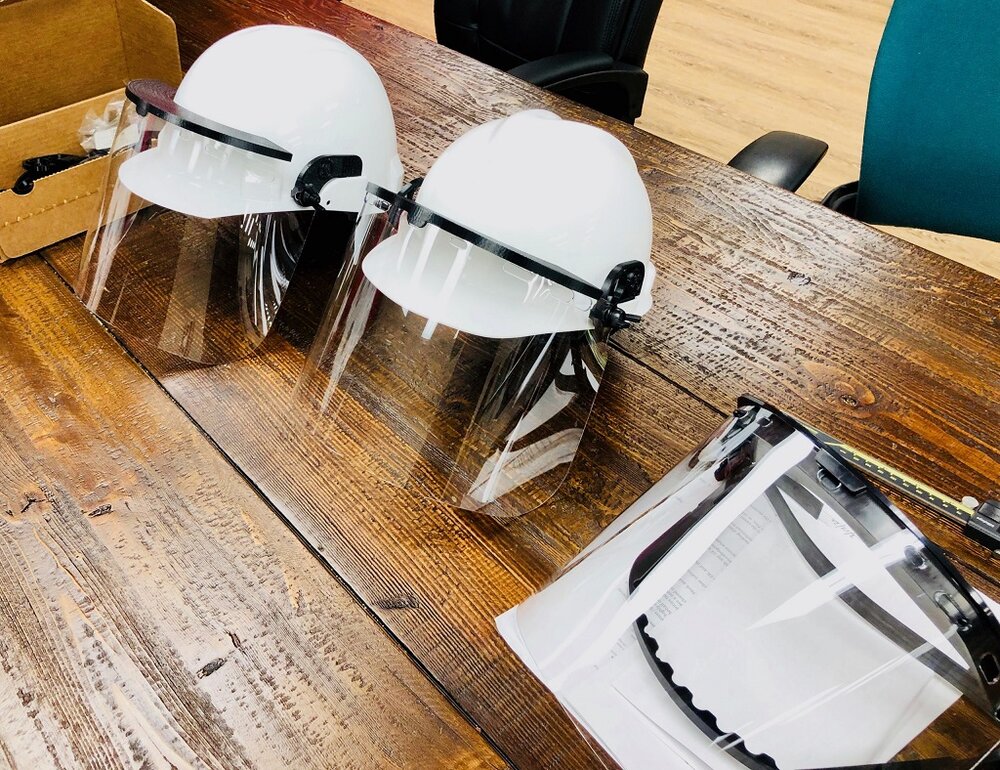Face shields with GE Additive’s 3D printed adapters [Image: GE Additive]
Since it stepped into the additive manufacturing industry, GE has been all about metal 3D printing — but always with a focus on the best-fit solution.
For 3D printing, the pandemic spread of novel coronavirus has been an opportunity to turn rapid prototyping to rapid PPE as personal protective equipment is in short supply and needed now. That sense of urgency is an excellent fit for 3D printing, which can turn idea to product within hours in many cases, and the technology is proving a key stop-gap supply solution in urgently needed PPE as traditional manufacturing ramps up to meet the high volumes of demand around the world.
It’s been all hands on deck as manufacturing companies working with 3D printers are generally still considered “essential business” during this period of shutdown. Everyone from major automotive producers to small startups has been turning their attention — and their equipment — to creating PPE to help meet local demand.
In many of these cases, it’s a hand-in-glove fit (and not just because workers are wearing gloves to prevent cross-contamination). For others, it’s a more out-of-the-box time to think adaptively. Whether that’s Ford 3D printing face shields or a FabLab 3D printing necessary ventilator components, the adaptability of 3D printing is a major benefit to its use during this time of crisis.
One company leaning heavily into adapting to the times is GE Additive.
GE Additive PPE
Face shields have proven to be one of the most effective and widely achievable forms of 3D printable PPE, but they have certain drawbacks. Notable among these is often the long time it takes to 3D print them; our own Kerry found it took five hours to 3D print one unit, while the team at GE Additive initially encountered twice that length of time. At 10 hours per print, this was hardly an effective solution.
There are ways to shorten the duration of the 3D print, including tweaking settings or adjusting the design — or, as the GE Additive team found, rethinking it entirely.
In March, a physician from Cincinnati’s TriHealth — near GE Additive — reached out for advice, quickly routed to the 3D printing team’s recently-assembled COVID-19 task force of engineers, supply chain experts, and legal and financial professionals.
With four acute care hospitals and 13,000 employees, the need at TriHealth is relatively significant, and growing along with the patient population. Time is also of course of the essence in turning around much-needed medical supplies, and that 10-hour print time wouldn’t cut it. So the GE team took a look at some of the healthcare providers’ DIY face shield designs, which comprised the necessary clear visor and a hard hat.
The hard hat proved the key to a new face shield design: a simple 3D printed adapter could click onto lateral and frontal tabs above the rim of the hard hat. That index finger-sized, boomerang-shaped adapter could connect in under 60 seconds, snapping into action for a ready piece of PPE.
GE Additive’s Polymer Solution


[The design rendering and finished product / Images: GE Additive]
Stepping back to an outside-the-pandemic view, we’re used to seeing GE Additive creating unique solutions with their metal 3D printing equipment. That was what put them on the additive manufacturing map, after all, as the acquisition of two metal players brought GE into the game just a few years ago.
But the hero of this story, as it were, is much more of a materials everyman: ABS.
ABS, one of the most common polymers used in extrusion-based/FFF 3D printing, offers certain capabilities that fit the bill for this adapter:
-
It needs to be disinfected at a wash cycle up to 195F multiple times daily
-
It needs to be strong
-
It needs to be time- and cost-efficient
-
It needs, obviously, to be 3D printable
So ABS it is, as GE Additive turned to FFF 3D printing to make the adapters.
3D printing of a single adapter takes about 15 minutes — but adding more of them to the build plate and reorienting to be printed vertically allows for a significant increase in production capacity.
While GE Additive used industrial systems, the file is printable on any FFF 3D printer. And that accessibility is just what the company was going for.
“Our ideal is to distribute this model to get this in the hands of healthcare professionals so that it can be utilized wherever it’s needed,” says Josh Mook, a Cincinnati-based innovation executive at GE Additive.
Following clinicians’ feedback on the prototype, hundreds of the adapters have been 3D printed. The TriHealth team has sourced hundreds of hard hats and are still working to obtain the face shields — which Mook’s team could also laser cut should none be findable.
The design is still subject to further updates as the medical teams put their new face shields to use. Among the updates in progress are “a hood that will address the gap between the lip of the helmet and the shield to provide additional protection against droplet or liquid ingress,” GE reports.
This use case is another outstanding example of the 3D printing community coming together to create a best-fit — not a corporate culture-fit — solution to help in the face of pandemic, working directly with those who will be putting the solutions to use.
Via GE Reports


![Face shields with GE Additive’s 3D printed adapters [Image: GE Additive]](https://fabbaloo.com/wp-content/uploads/2020/05/geadditiveshields_img_5eb0652f7e05e.jpg)